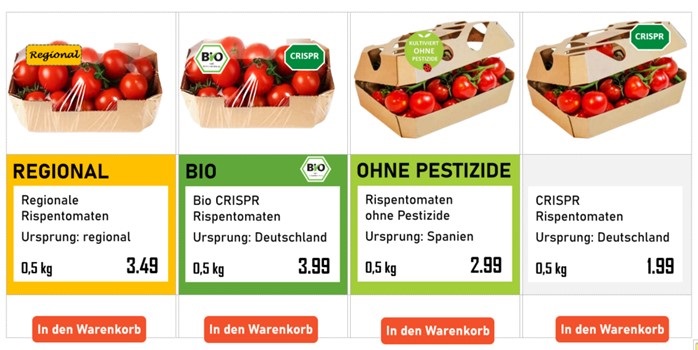- The CRISPR methodology aims to reproduce disease-resistant plant varieties to improve the adaptation of agricultural systems to changes in temperature.
- For Djamel Rahmani, representative of CREDA, “these types of projects represent a challenge, since we start from the basis that society has a negative perception towards these types of products”.
March 11, 2024
The Centre for Agro-Food Economics and Development (CREDA) is one of the partner entities of the project ‘From consumer protection to innovation marketing of green genetic engineering: Policy recommendations for optimised innovation communication’, which started on April 1 of 2022. This project, which uses green genetic engineering to reproduce disease-resistant plant varieties, aims to boost the adaptation of agricultural systems to climate change and environmental goals.
The project follows the research of the CRISPR genetic editing method developed by researchers Emmanuelle Charpentier and Jennifer Doudna, with which they won the Nobel Prize in Chemistry in 2020. Their proposal is based on “the selective activation of a mutation at a specific point in the DNA, which prevents the incorporation of foreign genes into the organism“. With its use, the use of phytosanitary products in agriculture could be reduced.
The project has a small set of partners: the Leibniz Institute of Plant Biochemistry IPB, the Leibniz Institute of Agricultural Development in Transition Economies (IAMO) and CREDA. Thus, its purpose is reduced to the study of the willingness to pay for genetically modified tomatoes (CRISPR Tomatoes) in Germany.

Chema Gil, PhD in Economics and director of CREDA, and Djamel Rahmani, PhD in Economic Analysis and Business Strategy, are the representatives of the Catalan centre in the project. For them, “participating in projects of this type is a challenge, since we start from the basis that generally the perception of consumers towards genetically edited products is negative“, assures Rahmani.
However, he points out, “it also allows us to evaluate the effect of the shared information and see if the way it is presented gives rise to a more positive bias in society“.
To carry out the project, two videos, an objective scientific one and a more narrative one, will be presented to 2,000 consumers who will have to answer a survey and carry out a choice experiment where the edited tomatoes will be used. The aim of this test is to find out the influence of information on consumer selection behaviour, as well as the willingness to pay for genetically edited products.
In addition, through the study and observation of the answers collected, the project seeks to contribute to the acceptance of the new green genetic engineering methods by end users, in order to promote better sustainability in the agricultural systems.
Apart from the implementation of the project, the German government has also organized discussion events and shared information about green genetic engineering that can speed up social dialogue and scientific communication.

